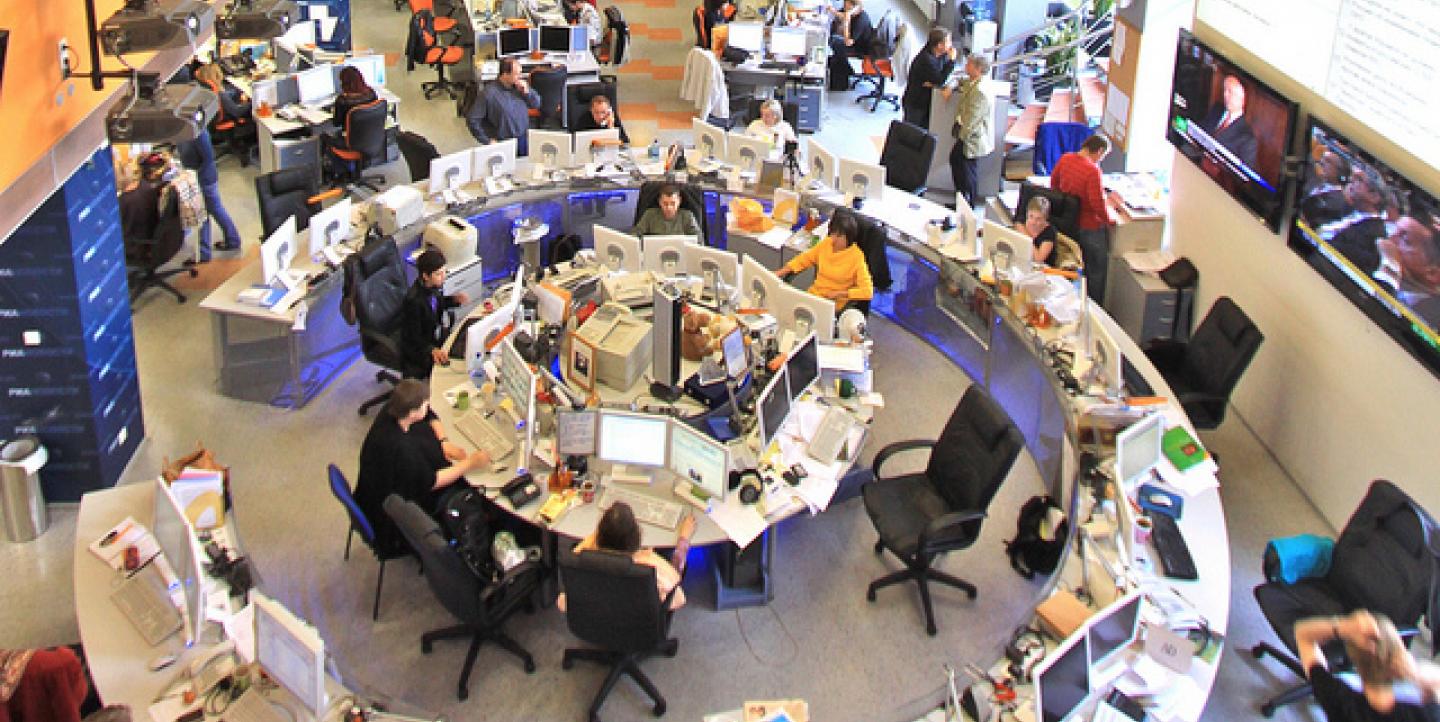The New York Times is trying to make its morning meeting an all-platform discussion, rather than its traditional meeting discussing what’s on page one. Public Editor Margaret Sullivan used the changed meeting as the opening of her Sunday column:
“It’s Wednesday morning and 39 editors have filed in to the 10 a.m. meeting in The Times’ third-floor conference room, some carrying laptops and smartphones, others with pens and notepads."
The meeting, which until recently concentrated on the printed newspaper, now emphasizes a different discussion: journalism on the digital platforms of The Times. There was praise for headlines that had contained the right words — both “Eric” and “Cantor,” in this case — to maximize online search results; a query about whether a story would be accompanied by a video; and talk about how to give a political package more weight on the home page. There was even a half-joking reference to the readership spike that came after an initial foray on Twitter by the new executive editor, Dean Baquet, who had praised coverage of a Brooklyn funeral and provided a link."
The column moved from the meeting anecdote on to broader questions about the Times’ challenge of developing a stronger digital focus to reflect the growing challenges and opportunities of digital publishing.
Times Innovation Report
The changes to the morning meeting also were discussed in the Times’ Innovation report:
“The newsroom is unanimous: We are focusing too much time and energy on Page One. This concern — which we heard in virtually every interview we conducted, including with reporters, desk heads, and masthead editors — has long been a concern for the leadership. And yet it persists. Page One sets the daily rhythms, consumes our focus, and provides the newsroom’s defining metric for success. The recent announcement from Tom Jolly to focus the Page One meeting more on the web report is a great step in the right direction, but many people have voiced their skepticism that it will truly change our focus."
“You can’t take new talent and put them in old structures where they are second-class citizens,” said the editor of one competing newspaper. “That is not real change. You must change the structure of power.”
Here is a typical complaint from a Washington reporter who frequently appears on A1: “Our internal fixation on it can be unhealthy, disproportionate and ultimately counterproductive. Just think about how many points in our day are still oriented around A1 — from the 10 a.m. meeting to the summaries that reporters file in the early afternoon to the editing time that goes into those summaries to the moment the verdict is rendered at 4:30. In Washington, there’s even an email that goes out to the entire bureau alerting everyone which six stories made it. That doesn’t sound to me like a newsroom that’s thinking enough about the web.” The two Times pieces have raised the issue of focusing newsroom meetings on digital platforms. In an upcoming post, I’ll explain how to lead a news meeting that puts digital journalism first.
This post is an excerpt from one which originally appeared on The Buttry Diary. It is republished on IJNet with permission. Steve Buttry, a veteran editor and journalism trainer, is Digital Transformation Editor at Digital First Media. He was named the inaugural Lamar Visiting Scholar at Louisiana State University’s Manship School of Journalism and Communication, where he will begin work July 1.
Image CC-licensed on Flickr via Jürg Vollmer

